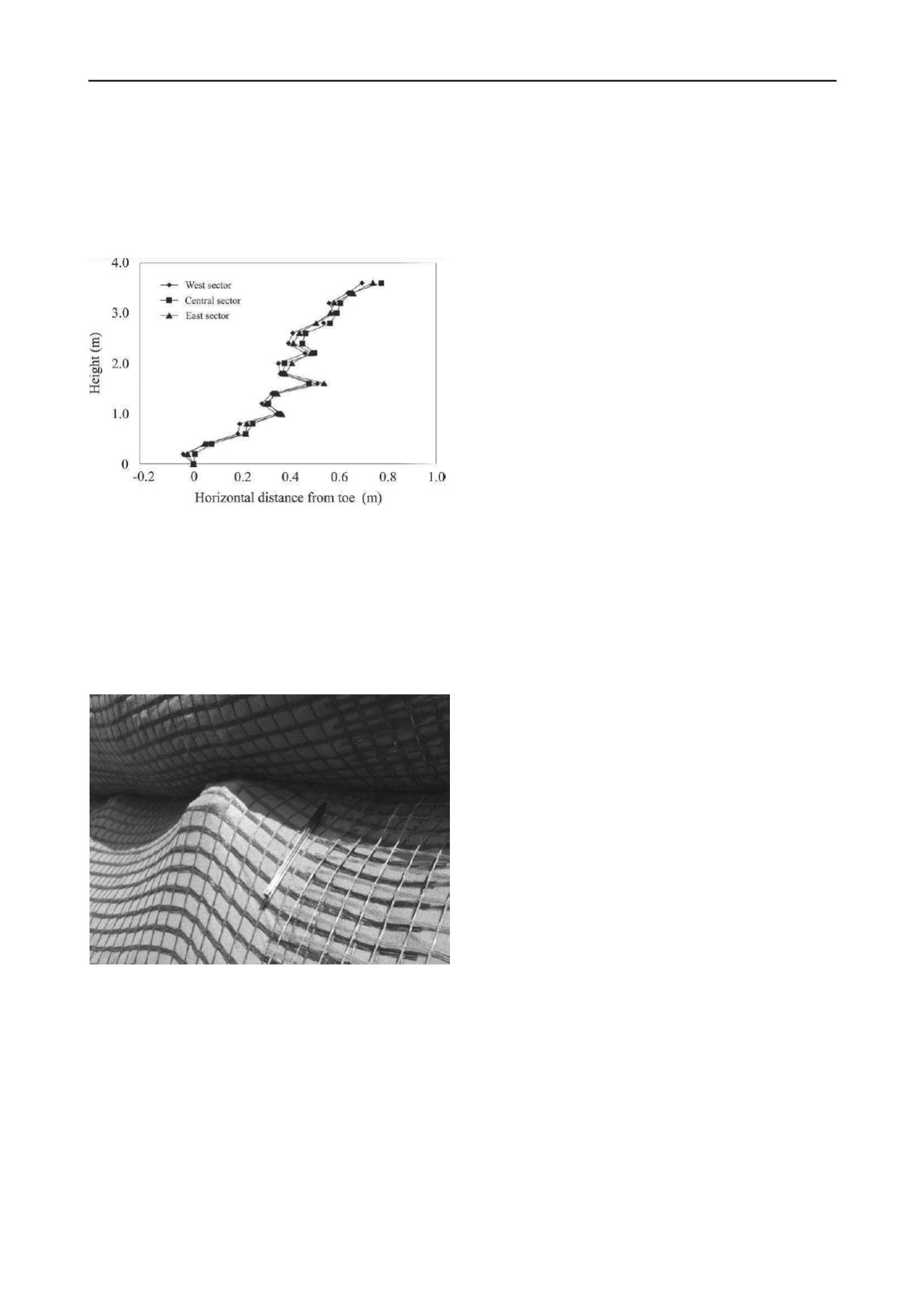
3254
Proceedings of the 18
th
International Conference on Soil Mechanics and Geotechnical Engineering, Paris 2013
(geogrid) a maximum end of construction face displacement
measured with respect to formwork position of approximately
106 mm. Wall # 2 (geotextile) revealed a maximum end of
construction face displacement - measured with respect to
formwork position - approximately equal to 254 mm. Figure 7
shows wall #1 post-construction face profile.
5 ACKNOWLEDGEMENTS
Funding for the research programme described here was
provided by CNPq, FAP-DF and CAPES. The authors would
like to acknowledge the contribution of the Geotechnical
Research Group at RMCC, FURNAS, EMBRE, REFORSOLO,
ORIGINAL, HUESKER, OBER, LINEA G, TORC, LINEA JR,
ASCOLE, COOPERCOLETA and CAENGE AMBIENTAL.
.
6 REFERENCES
CONAMA – Brazilian Environmental National Council. Resolution nº
307
–
Available
in:
.
Accessed at November 13th, 2006.
Santos, E.C.G., 2007. The Use of Recycled Construction and
Demolition Waste (RCDW) in Reinforced Soil Structures. M.Sc.
thesis, University of Sao Paulo, Sao Carlos, Brazil, 168 pp. (in
Portuguese).
Santos, E.C.G, Palmeira, E.Marques, Bathurst, R. J. 2010 . Construction
of a full-scale wrapped face geogrid reinforced wall using recycled
construction and demolition waste as backfill material. In:
9th
International Conference on Geosynthetics, 2010
, Guarujá-SP
Santos, E.C.G., 2011. Experimental Evaluation of Reinforced Soil
Walls Built with Recycled Construction and Demolition Waste
(RCDW) and Cohesive Soil as Backfill Materials. D.Sc. thesis,
University of Brasília, Brasília, Brazil, 216pp. (in Portuguese).
Figure 7. Post-construction face profile (Santos et al. 2010).
It was noticed for both walls that the presence of coarse
particles near to face was responsible for the uneven surface and
the different magnitude of facing displacements among the
walls sectors at the same layer (Figure 8). Although this fact did
not affect the mechanical performance of the walls, it is strongly
advised to use a selected RCDW near the face in order to
provide a better aesthetic aspect.
Figure 8. Uneven surface recorded at the wall #1 face.
4 CONCLUSIONS
The results obtained in the research programme have shown that
the RCDW used has excellent mechanical properties - with low
variation – which allow its use not just in the suggested
proposal but in other geotechnical works. Additionally, the
adoption of a careful installation process due to the presence of
coarse particles of RCDW seemed to be successful once the
strain gauges presented a high and stable survival level. Based
on lessons learned during the construction process, some
recommendations were presented with aiming at promoting a
better performance of reinforced walls built with this “novel
construction material”.


